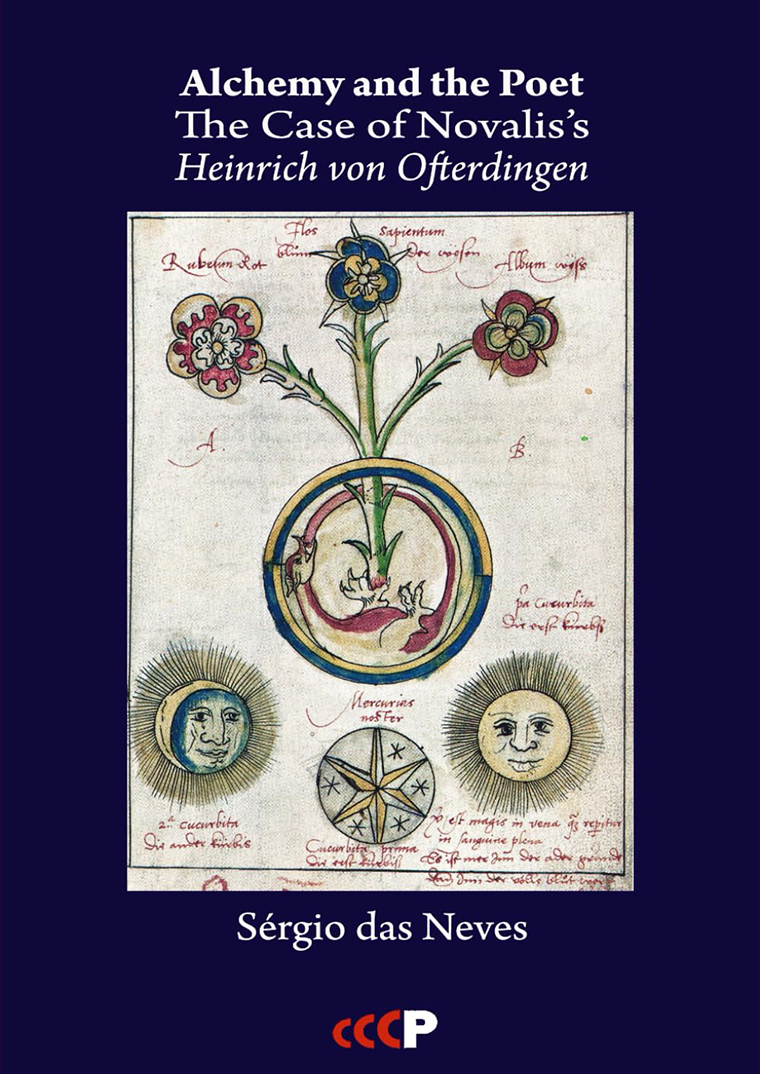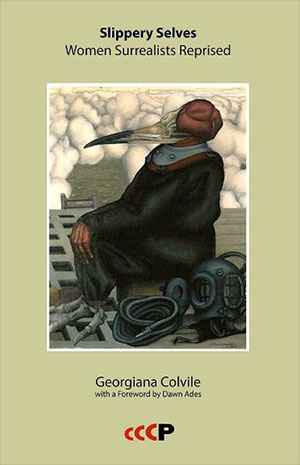Critical, Cultural and Communications Press
Art, Literature and Criticism
Alchemy and the Poet: The Case of Novalis’s Heinrich von Ofterdingen
by Sérgio das Neves

- 158 pp.ISBN 9781905510771
- Date of Publication: 2 April 2025
This study revisits Novalis’s Heinrich von Ofterdingen (1802), offering a ground-breaking alchemical interpretation of this quintessential Romantic novel. Through the lens of alchemy, the study reimagines the protagonist’s journey as an initiation into the mysteries of poetry, imbued with Orphic and mystical dimensions. It explores the novel’s structure and characters as reflections of alchemical transformation, revealing a poetic philosophy in which imagination transmutes reality.
Contextualizing Novalis’s thought within Romanticism and hermetic traditions, the book traces influences from Pietism, Gnosticism, and Jacob Böhme to alchemical symbolism. It demonstrates how Novalis weaves the symbolic language of alchemy into his vision of the poet as an agent of unity and renewal. The blue flower, central to the Romantic imagination, emerges as a potent alchemical symbol.
While alchemy is not the exclusive key to Heinrich von Ofterdingen, this study positions it as a rich interpretative framework, connecting Novalis’s work to contemporary discourses in literature, philosophy, and cultural studies. Ultimately, the book reaffirms alchemy’s enduring relevance in understanding transformation, both poetic and existential.
Where you can buy this book from Amazon
(Just click on the link for your home Amazon site)
Paperback
Around the World in Wood
by E. Dawson Varughese
with illustrations by Nassif Muhammed Ali

- 72 pp. (large format, A4)
- ISBN 9781905510719
- Date of Publication: 21 July 2021
Around The World in Wood is a teacher resource designed for National Curriculum Key Stage 1 (ages 5-7) learning in England and Wales, but it can be freely adapted to most educational settings. It takes an interdisciplinary approach to exploring the world’s trees and the cultural values associated with them. Each country-themed chapter introduces a particular tree and a related extract from a poem from that country in which the tree features. An illustration of the tree, presented in a botanical-style sketch, introduces ideas of how the natural world has historically been documented in books and archives.
“A unique collection of learning activities that could be used to expand a Forest School programme or to unite learning around the theme of trees. An accompanying PDF is filled with illustrations and links to materials to assist you to create engaging, tailored learning that reaches afar to India, Zimbabwe, Australia, Sweden, Iran, Jamaica, Japan, Mexico, Canada and Hungary.”SARAH KEOGH, FOREST SCHOOL LEADER,
DERBYSHIRE ENVIRONMENTAL STUDIES SERVICE
“The book is a rich, diverse, well-informed resource that will support teachers and educational practitioners in delivering a multitude of KS1 curriculum skills that pupils will enjoy completing.”BEN ADAMSON,
SCHOOL LEADER, GREAT WOOD COMMUNITY PRIMARY SCHOOL
“An excellent, well-researched resource which offers children and teachers the opportunity to explore the wider curriculum and their place in the world.”CHLOE WOODHOUSE AND JAMES DACHTLER,
ASSISTANT HEADTEACHERS, THE BEMROSE SCHOOL
Where you can buy this book from Amazon
(Just click on the link for your home Amazon site)
Slippery Selves: Women Surrealists Reprised
By Georgiana Colville

- 177 pp. ISBN 9781905510634
- Date of Publication: 18 May 2020
“Surrealism can be considered as the major poetic movement in twentieth-century France. Paradoxically, it liberated the creative drives of the very women it was reducing to objects or muses. The numerous talented women connected with Surrealism are gradually becoming internationally known, though more for their achievements in the plastic arts or for their prose writing. My approach to their work will be somewhat eclectic. Other critics have tended to avoid women’s poetry and Surrealist poetry derived from automatic writing as subversive of any norm to which they could apply their various grids. I have retained relevant meta-texts that will enable me to situate them in the double context of Surrealism and women’s poetry. The biographical element proves to be important, given women’s strong tendency to weave their own bodies into the fabric of the text treated as mirror.”GEORGIANA COLVILE
“Georgiana’s unquenchable spirit and her passion for the artists and poets she writes about, as well as her deep knowledge of their work, are alive in the writings gathered here. She writes with equal authority and insight into both the poetic and visual languages of her subjects. It seems to me that one of the characteristics of her approach in these texts is an urge to encompass the whole of an artist’s or poet’s world: not just their creations but the complex personal and historical conditions of their making. She was keen to make her own understanding of the works and the ways these are woven into the whole story of a life accessible to the many rather than the few.”DAWN ADES
Where you can buy this book from Amazon
(Just click on the link for your home Amazon site)
Reflections on South African Fiction in English
by Elizabeth Taylor

- 234 pp. ISBN 9781905510610
- Date of Publication: 19 June 2017
Elizabeth Taylor’s reflections on South African fiction are rooted in the political and social realities which dictated, until the democratic era, the preoccupations of most writing produced in the country: the politics of oppression and dispossession, identity and racism, gender and miscegenation.
From Olive Schreiner’s Story of an African Farm (1883) to Sol T. Plaatje’s Mhudi (1930), from Alan Paton’s Cry, the Beloved Country (1948) to Zoë Wicomb’s You Can’t Get Lost in Cape Town (1987), from Nadine Gordimer’s July’s People (1981) to J. M. Coetzee’s Disgrace (1999), Zakes Mda’s Madonna of Excelsior (2002) and André Brink’s Philida (2012), she traces the intimate relationship between politics and literature in this work, and the evolution of greater creative freedom in South African fiction under democratic rule.
She concludes by demonstrating that, while South Africa today may not be a perfect nation state, at least all its people from all backgrounds are now at liberty to write about it as they choose.
Elizabeth Taylor grew up in British India and South Africa and is uniquely positioned to examine the colonial legacy. Under apartheid she witnessed first-hand the struggle amongst people of all ethnic backgrounds to find a way of combatting and enduring the situation. Before embarking on her doctorate at Rhodes University (Grahamstown), Elizabeth (Betty) Taylor published travelogues on the Transkei in South African newspapers such as the Cape Times, the Cape Argus and the Eastern Province Herald. Later, while employed as a lecturer in English Literature at Rhodes, she completed a pioneering thesis on early poetry in English written at the Cape. One of the poets dealt with in her thesis, the Scot Thomas Pringle, appears in this book. She then moved to England, where she was appointed to a lectureship at the University of Nottingham. At the height of European opposition to and awareness of apartheid she introduced students to South African fiction in English. She continued to explore South African fiction with successive generations of students long after Nelson Mandela had retired from public life, taking great pleasure in the emergence of a multiplicity of new writers in the post-apartheid era.
Where you can buy this book from Amazon
(Just click on the link for your home Amazon site)
Karl Marx and Frederick Engels on Literature and Art
Edited by Stefan Morawski and Lee Baxandall

- 160pp. ISBN 978-1905510023
- Date of Publication: 1 May 2006
Karl Marx and Frederick Engels on Literature and Art is an accomplished revision of a major anthology of their writings on aesthetic matters. Distinguished by its careful thematic grouping of the appropriate works, and prefaced by a masterly essay by Stefan Morawski, the volume is here republished for the first time in over thirty years.
For this new edition, Macdonald Daly has added an introductory “Short History of Marxist Aesthetics”, to situate Marx and Engels in the later history of the field, and to shine the light of later Marxist theory on the original anthology. He has also systematically revised, updated and amended Baxandall and Morawski’s explanatory notes, and substantially enlarged and corrected their original index.
“In the crucial but problematic field of Marxist aesthetics, Morawski is surely the greatest living authority. Morawski’s study of Marx’s own aesthetic pronouncements appears as the preface to the valuable new collection of Marx and Engels’ writings on Literature and Art … It may be considered definitive.”FREDRIC JAMESON
“… the best epitome of Marxist aesthetics in English, and so far as I know, in any language.”MELVIN RADER, The Journal of Aesthetics and Art Criticism
Where you can buy this book from Amazon
(Just click on the link for your home Amazon site)
Green Voices: Understanding Contemporary Nature Poetry
By Terry Gifford

- 216 pp. ISBN 9781905510290
- Date of Publication: 26 April 2017
This text seeks to discover what different notions of nature actually underlie contemporary poetry, and how they relate to traditional assumptions about "nature" in the poetry of Ireland, Scotland, Wales and England. It also asks what new contributions to British nature poetry have been made by Black and Asian poets, by women and radical green poets.
The author argues that the traditions of Pope and Goldsmith are continued in the present day by the likes of R.S. Thomas, George Mackay Brown, John Montague and Norman Nicholson. Patrick Kavanagh and others work in an "anti-pastoralist" tradition of Crabbe and Clare.
Defining a "post-pastoral" poetry are Seamus Heaney, the successor to Wordsworth, and Ted Hughes, successor to Blake. In Scotland, Sorley Maclean's poetry has taken Gaelic nature poetry into the age of the nuclear threat.
A chapter examining the attitudes towards the environment of 16 contemporary poets concludes the book.
Where you can buy this book from Amazon
(Just click on the link for your home Amazon site)
Working and Writing for Tomorrow: Essays in Honour of Itala Vivan
Edited by Annalisa Oboe, Claudia Gualtieri and Roger Bromley

- 288 pp. ISBN 9781905510177
- Date of Publication: 1 May 2008
The rationale behind this collection of essays is provided by the Saidian notion of the intellectual as a political activist, a cultural interpreter, and a traveller through cultures and worldviews. As the title of the book suggests, being an academic today entails working in the ethical/political field of education and writing (in the sense of doing research and disseminating knowledge) with the sense of being in the world and having a project for tomorrow in mind: a future of beneficial dialogical encounters, critical awareness, and mutual understanding. The key notion of encounter—physical, intellectual, cultural—necessarily permeates the intellectual’s interest in socio-cultural phenomena and transformations, and also the work of this volume’s contributors.
The contributions deal with English, Black-British, North-American, Caribbean, and African literatures and cultures, and postcolonial theory and writing. Their main temporal focus is on the present: they are variously concerned with the here and now, as they analyse complex representations of culture in specific geographic and historical contexts. Special attention to ongoing processes of identity formation and to power relations between hegemonic and marginal discourses and positions is found throughout the collection, so that interesting reading paths across cultural borders can be followed.
This collection is offered as a festschrift on the occasion of Itala Vivan’s retirement from her position as Professor of English Literature and Postcolonial and Cultural Studies at the University of Milan, Italy, and it wishes to celebrate her intense scholarly activity, always carried out with the future in mind.
Where you can buy this book from Amazon
(Just click on the link for your home Amazon site)
Stolen Hearts: Fiction and the 1990s’ Pathology Scandal
By Tim Marshall

- 284 pp. ISBN 9781905510245
- Date of Publication: 7 August 2017
Using extensive documentary and literary sources, Stolen Hearts is an analysis of the many recent disclosures in the UK concerning human organs taken for pathology research without informed consent. It shows how contemporary fiction and autobiography, often paralleling growing public concern, draw attention to the history of anatomy and questions of medical ethics, and in particular to the importance of consented pathology.
Following the organ retention revelations, the UK's Chief Medical Officer recommended a programme of public education to ensure a general understanding of the purpose and value of pathology research. Tim Marshall argues that fiction in the 1990s and beyond not only offers a critique of current and past medical malpractice, but also contributes to this important educational project. The result is a study with a unique dual focus on contemporary literature and current affairs.
Where you can buy this book from Amazon
(Just click on the link for your home Amazon site)
A Primer in Marxist Aesthetics
By Macdonald Daly

- 62 pp. (large format, A4).
- ISBN 9780952202813
- Date of Publication: 5 February 1999
Marxist aesthetic theory provides a powerful resource for relating art to its social, political and economic contexts. A Primer in Marxist Aesthetics is aimed at readers with little or no knowledge of the field or its vocabulary. Grounding its approach in the works of “classic Marxism” by Marx and Engels, it presents succinct extracts from their key texts and those of later writers; it offers a commentary on these texts in clear language; and indicates how Marxist aesthetic theory is put to use in the practical analysis of art forms. In an attempt to build an understanding of the subject in a step-by-step manner, each chapter contains exercises and questions which prompt reflection on and enquiry into the material. As a result, Marxist aesthetics is seen as an area of contention father than a settled body of knowledge. The book will be useful to students undertaking a formal course of study and to other readers wishing to learn about the relations between Marxism and art.

